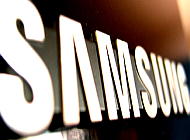Samsung sells a lot of phones. It also makes a lot of phones; so many, in fact, that it has always been berated for flooding the market with a slew of devices, each one not much different from the last one. But more than the number of smartphones, it has always been the naming convention Samsung has used to market these devices. It becomes increasingly difficult to keep track when they have names like Galaxy Star Advance or Galaxy S Duos 2. Last year, we exclusively reported that Samsung was working on simplifying things by launching smartphones with single-letter naming conventions, and the company soon launched devices like the Galaxy A3, A5, E5 and the E7.
Naturally, Samsung kept the Galaxy moniker for each device but went with a single letter and a number to signify where each device stands in the lineup. However, there have also been reports that Samsung is looking at reducing the number of devices it makes in 2015; there has been little to support these reports, but they have certainly made folks think that the company is downsizing its fleet of smartphones, when it's certainly not doing that to any noticeable extent.
At least not right now.
Thanks to trademarks applied for by Samsung, we discovered that it is working on the Galaxy J3, Galaxy J5 and the Galaxy J7. That's a lot of new devices for a manufacturer supposedly attempting to reduce its offerings, and this has made some publications out there call out Samsung for its obviously failed attempt to “downsize” its smartphone lineup. While we would all love for Samsung to focus on fewer devices and keeping these devices well supported (and updated) instead of launching a new device every other day, I think the Korean giant is already taking a giant step by launching these Galaxy A, E and J series of smartphones.
Samsung's strategy is simple: make a lot of phones, and make sure there is one at every price point. By differentiating its new lineups with a different number and features like a metallic build and screen size, the company is already doing a good job of making sure consumers will not be too confused when they're out in the market for a new phone. Of course, Samsung could simply have launched just the Galaxy A and J series and skipped the E lineup altogether, but launching all three is just the company's way of making sure it can offer a lot of devices to consumers without the disadvantage of making it hard for them to remember which device is which.
It's not that people will be totally clear on what is what – there's little to tell the average consumer that going for a Galaxy E will mean he/she will have to forego the premium feeling that the metallic build on the Galaxy A3, A6 and A5 offers, but I'm sure Samsung will do something about that in the future.
We might have to wait till 2016 before that happens (or it might never happen), but Samsung's current naming convention for its new devices is still a major step towards fixing a shortcoming it has had for a long time. Simplification is the key for the company at the moment and not downsizing. Again, we hope Samsung does focus on the latter at some point in time, but for now, we will have to be content with the fact that the next time we're looking for a Samsung smartphone, we will simply be able to tell where it stands in terms of features and price based on a single number that accompanies a particular device's name.







